11 The Art of Being a Tour Guide
Posted by Christine on Sep 26, 2014 in Ireland | 5 comments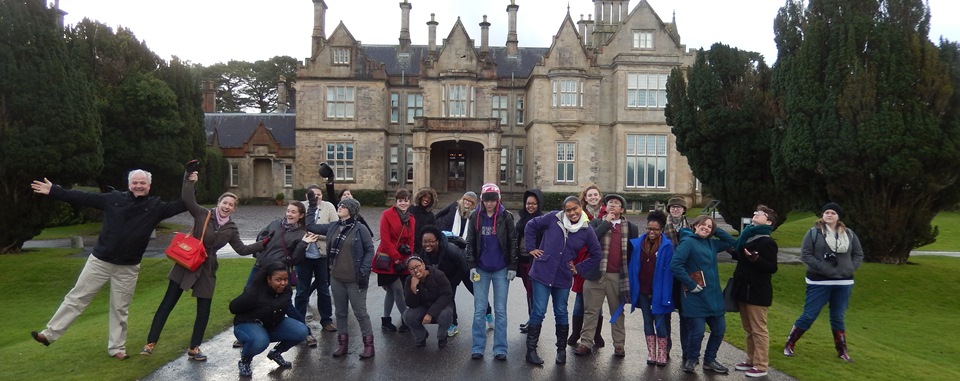
When I taught at Harvard in the 1970s, as part of freshmen orientation I was invited to lead a group of new students on a day tour of Lexington and Concord. Thrilled but scared by the prospect, I spent weeks boning up on the facts behind the Battle of Lexington and Concord, Paul Revere’s ride, the circle of writers and thinkers surrounding Ralph Waldo Emerson, Henry David Thoreau’s literary accomplishments, Nathaniel Hawthorne, Margaret Fuller, and the life, works, and family history of Louisa May Alcott. I drove out there to learn my way around all the important landmarks and picked my way through the cemetery so I could lead the students directly to the proper graves.
My first tour went reasonably well: I was able to answer their questions and didn’t embarrass myself, but something seemed missing. I had wanted to inspire excitement, questions, and a passion for reading, but all I saw in the students’ eyes was the occasional flicker of interest. As I thought about the day, I realized I had created a tour of facts instead of stories. The passion and the life were missing. Preparing for the second trip the following summer, I combed biographies and letters for stories I could tell at various locations on the tour. The facts were an important reservoir to draw on, but the stories turned heads and got the looks on students’ faces I wanted to see. Thoreau’s bad boy antics grabbed their attention better than a list of the thinkers who influenced him, and both were probably about equally relevant to the development of his theory of civil disobedience. The stories didn’t reveal every move or accomplishment, but they brought the history to life and made the listeners want more.
Since I started bringing student groups to Ireland—and now that I am living here with time on my hands to sample different kinds of tours—I’ve had the privilege of observing and learning from the best, the driver-guides for our groups Michael O’Brien and Dave Yeates in particular, but also guides at various sites around the country. These masters of their craft have set a very high standard for me as I travel here in Ireland and elsewhere.
Knowledge of the subject you’re talking about is a given for an expert guide, and that’s what the certification and licensing exams can assess. But having a passion for your subject and communicating that passion to others is equally important. Like a great teacher, a guide who is genuinely enthusiastic and eager to engender such enthusiasm in his audience can make a trip or a visit memorable and can literally change lives. On one of the Ireland trips, for example, a wonderful guide at Russborough House spoke so eloquently about the architecture of the Palladian mansion, the paintings and furniture in the fine Beit collection, and the ornate plasterwork on the ceilings that one of the students was utterly entranced. She made art history a new focus and years later still talks about that transformative visit.
Michael O’Brien, the driver-guide for the first five Agnes Scott trips and city guide since he retired, is passionate about the poetry of Patrick Kavanagh, the “hugely emotive” power of land in the Irish psyche as he puts it, the stories of working men and women that sometimes get left out of the national narrative, and many other subjects. Students who went on his trips remember their conversations with him as pivotal in their understanding of Irish history and culture. They talk about him and write to him long after leaving Ireland. Dave Yeates, driver guide for the last three and upcoming trips, is always looking for that something special on our tours that will mean “Ireland” to the group members. He spends his non-touring time researching venues around the county that will offer “something extra” to his tours: a working sheep farm that includes lamb-petting, a sheepdog demonstration, a wonderful farmhouse dinner, and a scone-making lesson; an island visit where the local musicians and dancers drop by to entertain the tourists. To see Dave talking about high crosses as he stands beneath one, gesticulating and holding fast despite an oncoming storm, is to understand what it means to love and believe in your work.
Guides who connect with their audiences turn a mere tour into something memorable for each participant. Both Michael and Dave make it their business to get to know every student on the trip and to offer insights, connections, and tips to help them develop their individual interests. Both of them have shortened or cut out their break time to give students rides to places they wanted to see that weren’t on the itinerary: the cemetery where Jane Austen’s Irish suitor is buried, a castle open for tours, an out-of-the-way location where a film was shot, or a pub with a family name on it. They will often linger after dinner for in-depth conversations on everything from politics to pop music or take the group on a carefully planned pub crawl through the town. These kind men also keep an eye out for students feeling sick, isolated, or homesick and find a way to give them a boost with a word or a bit of attention. On one trip a student who had caused the group significant inconvenience was looking a bit forlorn; Michael made sure she found her way back to group’s good graces. Dave puts so much into making sure each student has a meaningful experience that as one student wrote, “Dave is Ireland for me!”
I am often moved by the extra attentions guides offer foreign visitors who may feel strange or uncertain in this new place. On a recent day trip to Wicklow, our guide managed to greet everyone on the bus in a few words of their native language. As we toured the mountains and vistas of this beautiful region, he would sprinkle foreign words throughout his narratives. At first this seemed almost corny to me, but as I continued to observe, I noticed how these tourists, some of whom did not seem to speak any English, warmed to his linguistic gestures. As a speaker of Irish, he may have been especially sensitive to the marginalization of non-English languages. I would guess that his efforts, while not really communicating anything of substance, made the trip more meaningful to these guests.
One way to connect with your audience is to put a little of yourself into the story. When we are in Derry/Londonderry, I always ask for Ronan McNamara of McNamara Tours to be our city guide. Born in the Irish Midlands with an impeccably Irish name, Ronan is half Chinese. He is extremely knowledgeable and thoughtful about the complex history of Northern Ireland: his tours have literally made Derry a tourist destination. But even more important for our group, his story of growing up bicultural in homogenous—until recently—Ireland really speaks to students growing up in a multicultural, multiracial world. When he tells the story of his wedding, you feel confident that disparate groups can eventually come together, an important hope for Northern Ireland.
Another McNamara guide, Carolyn, had us all enthralled as she told her own story of growing up in Derry during the Troubles. Her tales of family, friend, and boyfriend pressures amid the political turmoil made that period all seem very real and much easier to grasp. On one of our tours of Glasnevin Cemetery in Dublin, the guide told us his family’s connection to the Easter Rising in 1916 and even recited part of a famous graveside eulogy on the spot where it made history. From the Giant’s Causeway to Belfast, our Northern Ireland guide Rosemary Connelly merges her passion for geology with the historical and social stories she tells. Her enthusiasms and knowledge ignite the student’s many interests and demonstrate how we can carry our passions with us into jobs, careers, and lifelong learning.
A great tour guide has many other qualities as well: a facility for language, an excellent memory for dates and quotations, an ability to see beyond partisan politics, a sense of humor. But the most important quality of all is, I think, an ability to create a narrative or a mosaic of narratives for the tour, whether it be an hour in a museum or eighteen days on the road in a bus. A powerful tour narrative touches on recurring themes, brings historical figures alive, blends information with anecdotes, incorporates the interests and questions of the speaker and the audience, and creates something each participant can take away, a story that continues to expand and develop as the listeners weave it into their own lives in faraway places.
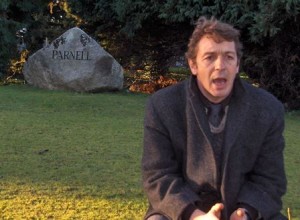
The late Shane MacThomáis, Glasnevin Cemetery historian and tour guide, who regaled many Agnes Scott students with his knowledge and wit.

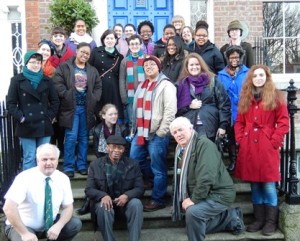
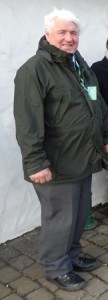
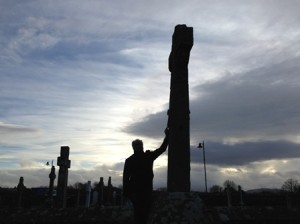
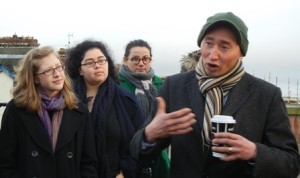
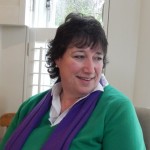
Christine . . . when you planned our family trip to “your country,” you were the perfect planner/guide. One of the things I remember most (besides all the churches and graveyards) was that even the Irish taxi drivers had stories to share. I sure hope we can make it back during your current sabbatical. Big hugs from Tucson.
Michele, Thanks for your comment! I have been fortunate to learn from the best.
I so enjoyed these wonderful insights into what qualities memorable tour guides have. Mark and I were lucky to have had such a guide during our time in Ireland, one with deep knowledge, passion, and humor. In short, you!
Many thanks for the kind words, It is a pleasure, and a privilege for me, and all of us involved in tourism to go the extra mile for all our friends at Agnes Scotts and Dr Cozzens And Dr Tolliver.
I love this post! Well, I love them all actually, but as a “tour guide” of sorts myself, one who is developing a new Comp I course using an historical archive, I felt both affirmed at our approach and challenged to create “A powerful [course] narrative.” The three of us working on our course have not, thankfully, “created a tour of facts instead of stories,” and our passion for the the material has grown along the way, so that, too, won’t be missing. The archive has allowed us to I include personal stories by and about Margaret Walker, so we are hoping to get those “looks on students’ faces” you write about. I too loved hearing about “Thoreau’s bad boy antics” and want to read more, now. This is what I want for our students and will continue to work towards. Thank you, again, Christine! -Kathi